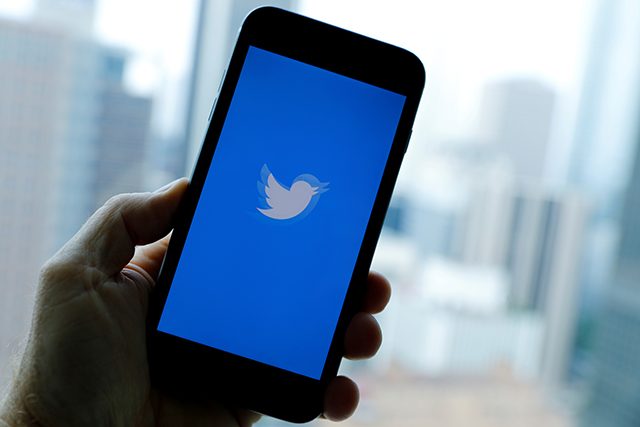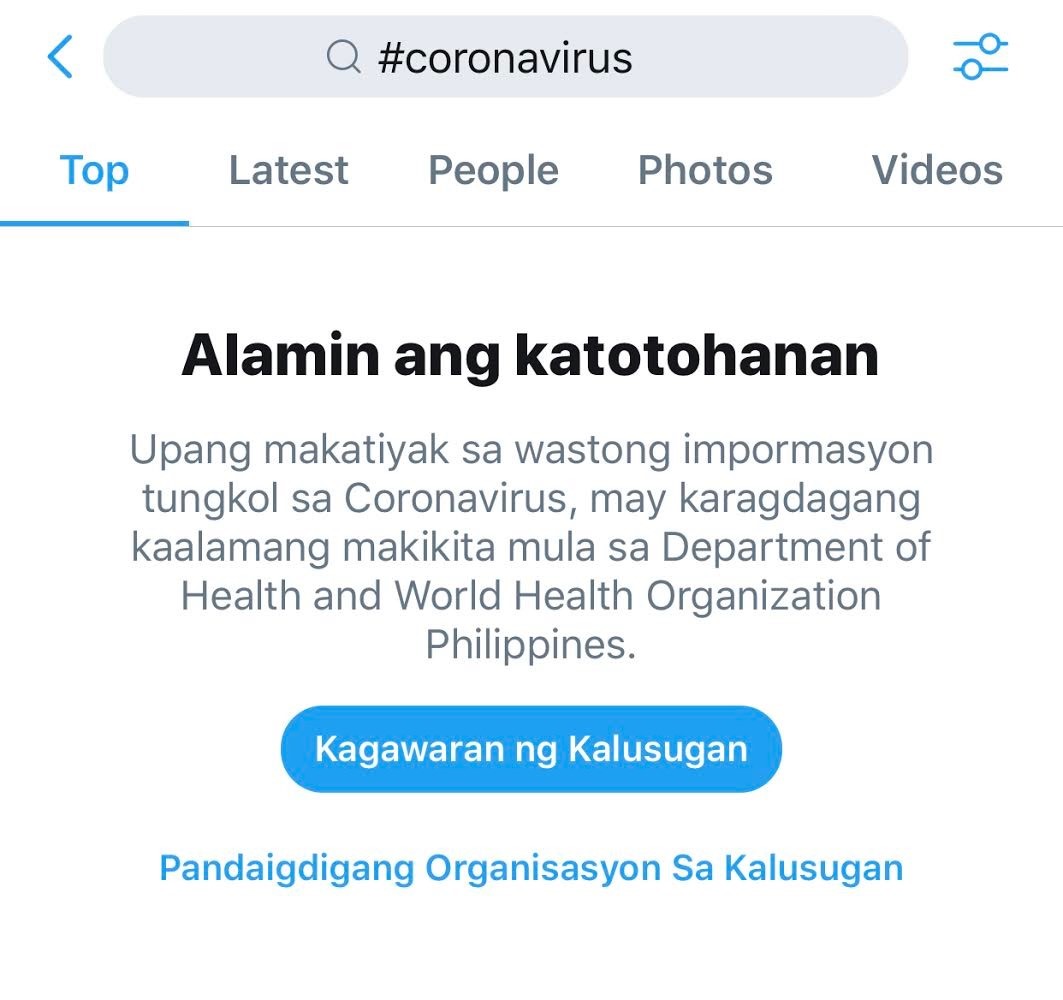
To help fight false information on the novel coronavirus crisis, local Twitter added features that would let users find tweets from credible sources only.
The World Health Organization (WHO) declared the new coronavirus strain or the 2019-nCoV outbreak as a global health emergency with more than 8,000 confirmed cases around the world.
Given the rapid rise of suspected cases in the country, Twitter launched a search prompt through the hashtag #coronavirus that ensures users to find only “credible, authoritative information first” on the microblogging platform.
Twitter also halted its auto-suggest results to the search bar to help lessen the possibility of directing users to unverified tweets.
“This is an expansion of our #KnowTheFacts prompt, which we specifically put in place for the public to find clear, credible information on immunization and vaccination health. When people search for information about coronavirus on Twitter in both English and Tagalog, the notification will appear in Tagalog,” Twitter said.
Moreover, Twitter also partnered with WHO and the Department of Health for this initiative.
When you search the term “coronavirus” on the search bar, Twitter would recommend you to go to the DOH page on updates of the Wuhan coronavirus and WHO-Philippines Twitter account for more verified updates.
“Upang makatiyak sa wastong impormasyon tungkol sa Coronavirus, may karagdagang kaalamang makikita mula sa Department of Health and World Health Organization Philippines,” the recommendation read.

During the previous Taal Volcano eruption, local Twitter managed to filter fake and misleading information on their online communities with the use of coordinated hashtags such as “#TaalEruption2020,” “#TaalVolcano,” “#ReliefPH,” “#WalangPasok.”
Media outlets, social media users and government agencies used these hashtags to share only essential details and timely updates on the incident.
No to social media panic
Twitter has recorded over 15 million tweets about coronavirus globally since reports broke out about the discovery of the new strain from Wuhan, a populated city that has been under lockdown since last January.
Prior to the confirmation of cases in the Philippines, unverified posts of coronavirus cases spilled over Philippine Twitter and Facebook during the celebration of the Lunar New Year.
The state health agency confirmed two cases so far. One of the patients died last February 1.
This social media scare prompted some schools in Manila to suspend classes last January 27.
The Manila Health Department and several affected hospitals had since issued advisories against these fake news.
Sen. Risa Hontiveros also previously cautioned the public from sharing such sketchy testimonies online and cause unnecessary panic.
“We need correct information to get to the people. Kaya huwag tayong magpakalat ng fake news (So we should not spread fake news),” Hontiveros said.
For its part, Twitter has yet to find any significant attempt to spread disinformation about the topic.
“At present, we’re not seeing significant coordinated attempts to spread disinformation at scale about this issue. However, we will remain vigilant and have invested significantly in our proactive abilities to ensure trends, search, and other common areas of the service are protected from malicious behaviors,” it said.
“As ever, those who engage in these practices will be removed from our service. We do not permit platform manipulation and we encourage people to think before sharing or engaging in deliberate attempts to undermine the public conversation,” it added.









